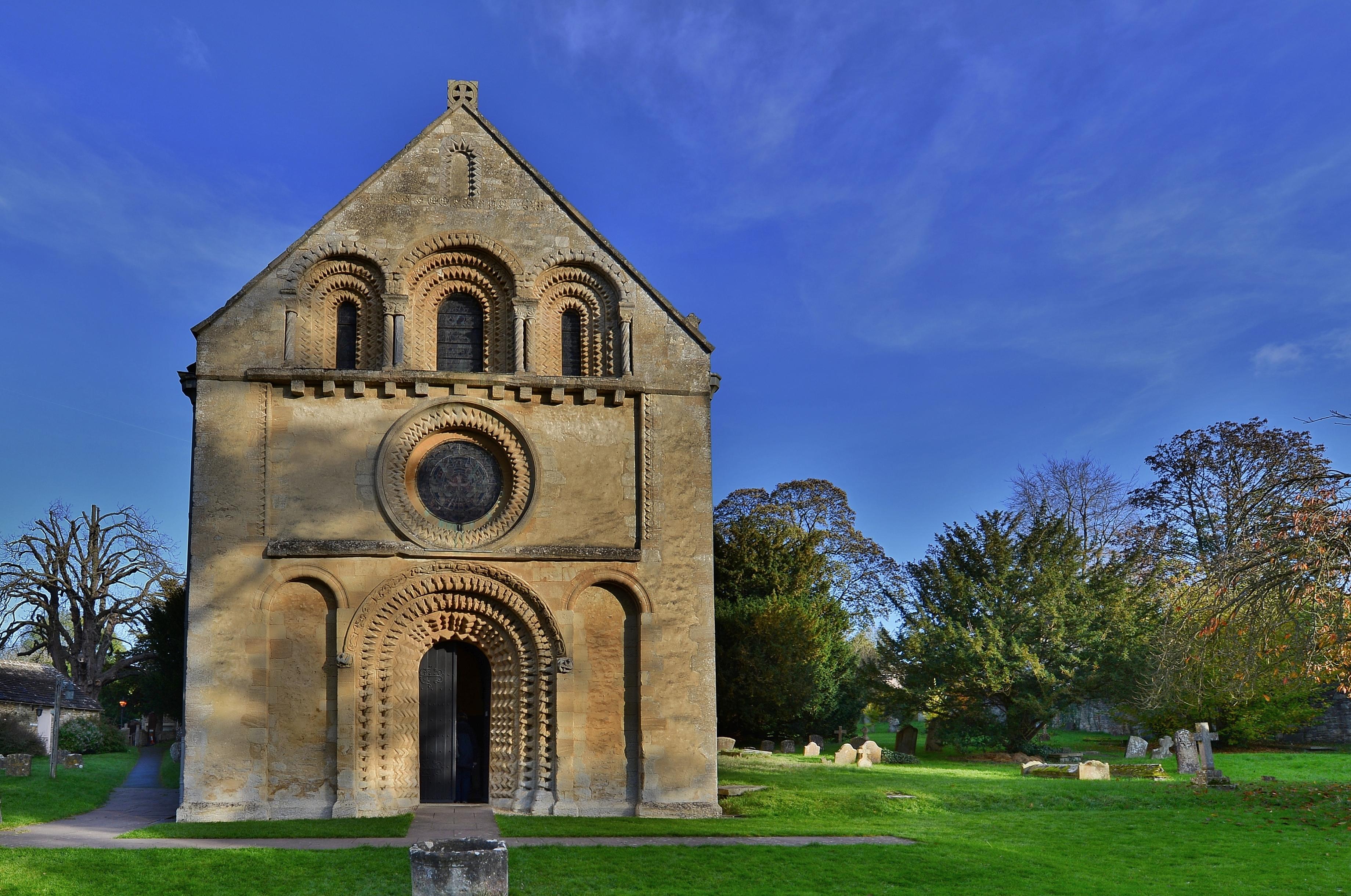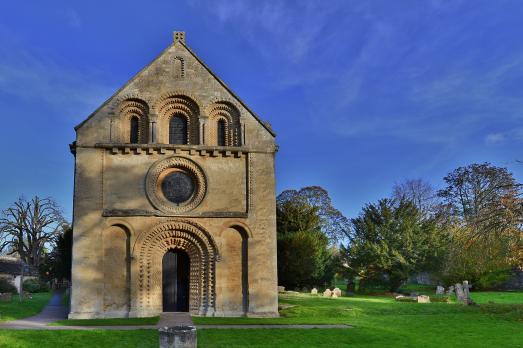St Mary the Virgin was built c1160-70 and is famous for its bold and uncompromising Romanesque architecture, on a scale and opulence which exceeds most other English churches of a similar ground plan, date and style.
It stands resolutely and unashamedly an as excellent late example of Romanesque architecture at a time when Gothic had already begun to appear elsewhere. A substantial unaisled parish church, Iffley is for its time and location a grand and sophisticated structure which in its architecture and ornamentation tells a striking story of the energy, ability, purpose and skill of its benefactors, those who built, and those who have preserved it.
St Mary’s sits on a grassy limestone knoll hard by the Thames two miles downstream from Oxford. Its presence is unexpected, commanding and captivating. Its glory begins with the uncompromising west front and south door surrounds, both ‘magnificent lavishly decorated’ (Pevsner and Sherwood). Indeed, the Iffley carvings are considerably more elaborate in style of decoration than almost any other surviving Norman parish church in England of the period.
The main doorway on the west front has two continuous orders of beakheads, a wide inner order of zig zag and a hood with a chain motif whose links frame signs of the zodiac and symbols of the Evangelists. The doorway is framed by tall blind arches and crowned with a restored oculus.
The south door surround consists of a continuous inner order of rosettes, fantastic beasts and quatrefoils. Its tone is gentler and more individualistic but no less impressive. Almost all the carvings are still crisp and clear. There are knights on horseback, a centaur family, a man astride a lion (perhaps Samson), a saddled horse being gored by a beast, a green cat, a merman and other animals real or mythical. All are expressive and all are contemporary with the building.
The interior is likewise virtually unaltered. It is dominated by massive, lavishly carved arches under the central tower and delicate detailing in the chancel vaulting. A square sanctuary was added in the 13th century.


